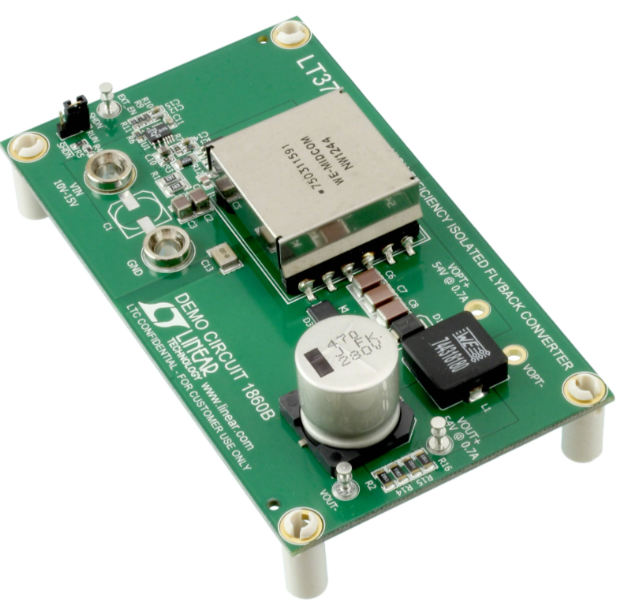The Ultimate Guide to Specification Book Websites for Electronic Components
Introduction
In the intricate world of electronics design and manufacturing, access to accurate, comprehensive, and up-to-date component information is not just an advantage—it’s an absolute necessity. The journey from a conceptual circuit diagram to a functional, market-ready product is paved with critical decisions, each hinging on the precise specifications of the electronic components selected. This is where Specification Book Websites of Electronic Components become the engineer’s most vital tool. These digital repositories have evolved far beyond the static PDF datasheets of the past, transforming into dynamic, intelligent platforms that streamline the entire component selection and procurement process. This article delves deep into the world of these essential resources, exploring their core functions, the immense value they provide to the electronics industry, and how platforms like ICGOODFIND are shaping the future of electronic design.

Part 1: The Anatomy of a High-Quality Specification Book Website
Not all component databases are created equal. A truly effective specification book website serves as a centralized knowledge hub, offering more than just a search bar and a list of parts. Its value is derived from the depth, breadth, and accessibility of its data.
1. Comprehensive and Standardized Data: The foundation of any reputable specification book website is its vast database. It should cover a wide spectrum of components—from common resistors and capacitors to complex microcontrollers, FPGAs, and sensors. More importantly, the data must be presented in a standardized format, allowing engineers to compare components from different manufacturers side-by-side efficiently. Key parameters like operating voltage, current rating, frequency, package type, and temperature range should be clearly displayed in a unified layout.
2. Intelligent Search and Filtering Capabilities: With millions of components available, finding the right one can be like finding a needle in a haystack. Advanced websites offer powerful parametric search filters that allow engineers to input their exact design requirements. Instead of searching by part number, they can filter by attributes such as “ARM Cortex-M4 core,” “256KB Flash,” “QFN-48 package,” and “price less than $3.00.” This parametric approach dramatically accelerates the initial selection phase.
3. Direct Access to Official Documentation: A critical feature is the provision of direct links to official manufacturer datasheets, application notes, reference designs, and errata sheets. While the website’s own summarized data is useful for comparison, engineers always need to consult the original manufacturer documentation for absolute certainty before finalizing a design. Trustworthy platforms ensure these documents are the latest versions.
4. Supply Chain Intelligence: In today’s volatile market, a component’s specifications are only part of the story. Its availability and cost are equally crucial. Leading specification websites integrate real-time supply chain data, displaying current stock levels across multiple distributors (e.g., Digi-Key, Mouser, Arrow), pricing trends, lead times, and alternative or cross-reference parts. This helps prevent design bottlenecks caused by obsolete or long-lead-time components.
Part 2: The Tangible Benefits for Engineers and Procurement Teams
The adoption of a robust specification book website delivers measurable benefits across the entire product development lifecycle, impacting both engineering and business outcomes.
1. Dramatically Accelerated Design Cycles: The most immediate benefit is a significant reduction in the time spent on component research. Engineers can quickly identify viable options, perform comparisons, and validate choices without scouring dozens of individual manufacturer websites. This efficiency translates directly into faster time-to-market for new products, providing a critical competitive edge.
2. Enhanced Design Accuracy and Risk Mitigation: By providing a single source of truth, these platforms minimize the risk of human error inherent in manual data entry or reliance on outdated documents. Access to reference designs and application notes within the same ecosystem helps engineers implement components correctly the first time, reducing the likelihood of costly board spins and project delays.
3. Informed Sourcing and Cost Optimization: For procurement and supply chain teams, these websites are indispensable. The integrated supply chain data allows for informed sourcing strategies. Teams can identify which distributors have stock, compare prices instantly, and evaluate alternative components suggested by the platform to reduce cost or mitigate supply risk. This proactive approach to sourcing can result in substantial cost savings and improved supply chain resilience.
4. Knowledge Management and Legacy Design Support: Specification book websites act as an institutional knowledge base. When maintaining or updating legacy products, engineers can quickly find information on components that may no longer be actively promoted by manufacturers. This simplifies the tasks of finding replacement parts or designing equivalent functionality with modern components.
Part 3: Navigating Challenges and Embracing Future Trends
Despite their utility, these platforms face challenges and are continuously evolving to meet the demands of modern electronics design.
1. The Challenge of Data Currency and Accuracy: The electronics industry moves at a blistering pace. New components are released daily, and existing ones are frequently updated or obsoleted. Maintaining a database that is both comprehensive and current is a monumental task. The best platforms address this through automated data feeds directly from manufacturers and distributors, ensuring their information is as real-time as possible.
2. The Rise of AI-Powered Selection Tools: The next frontier for specification book websites is the integration of Artificial Intelligence (AI) and Machine Learning (ML). Future platforms will move beyond parametric search to offer AI-driven component recommendation engines. These systems could analyze a schematic or a bill of materials (BOM) and suggest optimizations, identify potential compatibility issues, or recommend alternative parts based on historical design success and field performance data.
3. Integration with Design Ecosystems: The true power of these websites is unlocked when they seamlessly integrate with Electronic Design Automation (EDA) tools. The ability to push a selected component’s footprint and symbol directly into a CAD library (like Altium, KiCad, or OrCAD) eliminates manual entry errors and saves valuable time. This deep integration with the design workflow is becoming a standard expectation.
This is where a platform like ICGOODFIND demonstrates its value proposition. By focusing on aggregating high-quality data and presenting it in a user-centric manner, it aims to simplify the complex process of component selection. While many larger platforms exist, targeted services that prioritize accuracy and ease of use fill an important niche in the market, especially for engineers seeking a streamlined experience.
Conclusion
Specification book websites for electronic components have fundamentally changed how engineers and procurement professionals interact with the building blocks of modern technology. They have evolved from simple document archives into sophisticated decision-support systems that are integral to efficient and successful product development. By providing centralized access to standardized data, real-time supply chain intelligence, and powerful search tools, these platforms empower teams to make better decisions faster, reduce risks, and ultimately bring superior products to market. As technology advances, we can expect these websites to become even more intelligent through AI integration and deeper connections within the design ecosystem, further solidifying their role as an indispensable asset in the electronics industry.



















